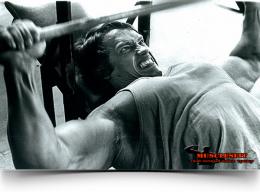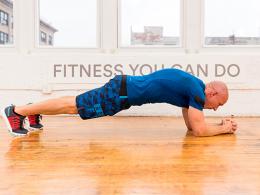How to learn to pull up on the horizontal bar - recommendations for beginners
To perform any load, the working muscles must be in good shape, especially for the main standard that determines the level of body control. Unfortunately, it is impossible to learn how to pull up in a day from scratch. It will take weeks and months to master full-fledged pull-ups, but you can prepare for the technique in the shortest possible time.
How to quickly learn to pull up: where to start
To begin with, the muscles must be prepared, that is, pull-ups must be preceded by other exercises in the gym or at home that strengthen the whole body. Starting from scratch, the muscles need about a month to adapt to the strength load, after which it is easier for them to lift weights and perform more complex exercise techniques. To prepare the muscles for pull-ups, it is necessary to perform an initial level of physical fitness, strengthening all muscles symmetrically. The main working muscles during pull-ups are the back and arms (biceps, forearms), but despite this, you need to simultaneously train the antagonist muscles (back - chest, biceps - triceps). All kinds of pull-ups, bench presses, and will be assistants for pull-ups.
Pull-up program for beginners
After strengthening all the major muscle groups, you can move on to preparatory exercises that speed up the learning process from scratch. Also, these exercises can be started from the first day of training, including them in the complex for the development of all muscles.
Horizontal pull-ups
The simplest method of pull-ups, but the main one for beginners, is mastering the technique. For muscle development and further progress in vertical pull-ups, perform the exercise for the maximum number of repetitions, constantly increasing the load (incline and number). The more horizontal the position of the body, the more difficult the load. Perform pull-ups until the muscles fail to work.
- Place your hands on a low bar with a wide grip.
- Place your feet in front of the bar, remaining hanging on straight arms, the body is at an angle (depending on the required degree of load).
- The muscles of the abdomen, lower back and buttocks are tense, keeping the whole body in the same plane (without sagging and unnecessary deflections).
- With an exhalation, pull the middle of the chest to the crossbar, bend the elbows at the level of the shoulder joints and bring them back behind the shoulder blades.
- As you inhale, straighten your elbows, keeping your torso straight.
To increase the load of the foot, you can put on a hill, for example, a bench, so the torso will be horizontal - parallel to the floor. You can also perform the technique with an average reverse grip, alternating exercises for the maximum number of repetitions for 3-4 sets.
Pull-ups with
After mastering horizontal pull-ups, move on to vertical pull-ups with an assistant. To improve your grip, use special pull-up straps or. Hanging on straight arms, bend your knees, the assistant can push out the weight of the body, holding the knees from below, or hold the palm between the shoulder blades, pushing the thoracic area up.
- Place your palms with a medium or wide straight grip, slightly wider than your shoulders, while standing on a bench.
- Get out, bend your knees.
- With an exhalation, try to pull your mid-chest up to the bar with the help of a partner who determines the force of pushing out on his own, only pushing the body for a snatch, and not pushing the weight on his own.
- While inhaling, do not rush to lower yourself, slowly straighten your elbows and continue to perform the maximum number until all strength is exhausted for another repetition.
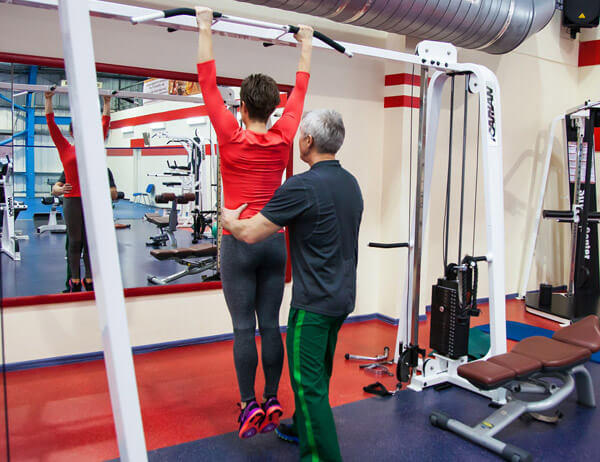
Also, with the help of a partner, change the grip technique to wide, narrow, reverse and parallel - developing all muscles symmetrically. When training on your own, use or to provide a counterweight and lighten the load.
Pull-ups to the floor of the amplitude
You can learn how to pull yourself up correctly by doing a simple technique in half the range of motion. To do this, you need a bench and a horizontal bar.
- Stand on the bench so that with a wide grip on the bar, the elbows form an angle, as in the middle of the pull-up amplitude.
- As you exhale, tighten your muscles, gathering all your strength for half the movement, and pull yourself up, pushing your chin to the bar.
- As you inhale, slowly lower yourself onto the bench.
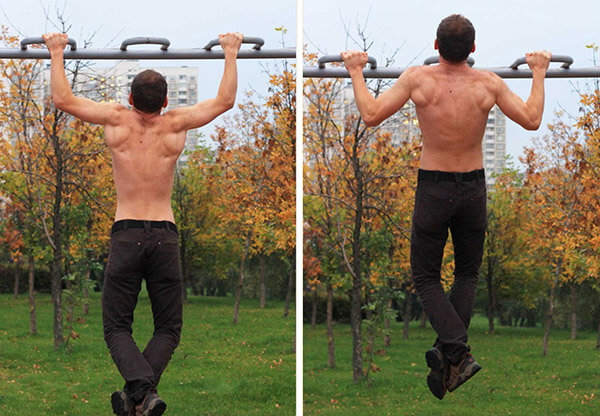
Gradually increase the range of motion, perform the maximum number of repetitions. Over time, it will be easier for the muscles to start pulling the weight of the body from the bottom point.
Proper pull-up technique
Mastering the correct technique will bring most of the success in mastering pull-ups. Only a well-chosen load will benefit the muscles, excluding possible injuries - sprains, ruptures of muscles and ligaments. After preparatory exercises, you can proceed to vertical pull-ups, constantly increasing repetitions.
- Place your palms in a medium grip (slightly wider than your shoulders).
- Pull yourself up, exhaling powerfully, with your chin to the crossbar.
- Keep your torso upright with your knees bent.
- While inhaling, do not write off to go down, do the downward movement more slowly.
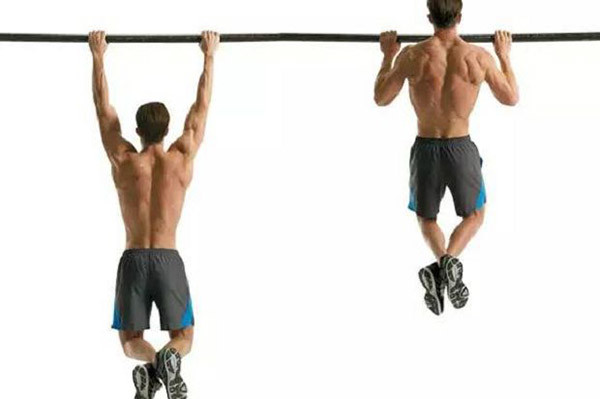
Conclusion
Do not perform pull-ups with jerks and falls, it is important to protect the joints and muscles for further work and progress. Try to increase the number of pull-ups every week, at least once. Alternate grips, increase the load, but do not train every day. Pull up after 2-3 days, allowing the muscles to


